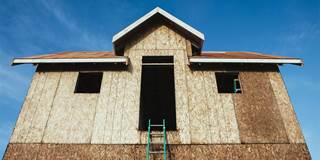By the time the global economic crisis is over, each dollar of excess investment in the housing market will likely have been responsible for roughly $6,000 in lost production. How can such a relatively small distortion in the allocation of investment cause so much economic damage?
BERKELEY – As bubbles go, it was not a very big one. From 2002 to 2006, the share of the American economy devoted to residential construction rose by 1.2 percentage points of GDP above its previous trend value, before plunging as the United States entered the greatest economic crisis in nearly a century. According to my rough calculations, the excess investment in the housing sector during this period totaled some $500 billion – by any measure a tiny fraction of the world economy at the time of the crash.

BERKELEY – As bubbles go, it was not a very big one. From 2002 to 2006, the share of the American economy devoted to residential construction rose by 1.2 percentage points of GDP above its previous trend value, before plunging as the United States entered the greatest economic crisis in nearly a century. According to my rough calculations, the excess investment in the housing sector during this period totaled some $500 billion – by any measure a tiny fraction of the world economy at the time of the crash.